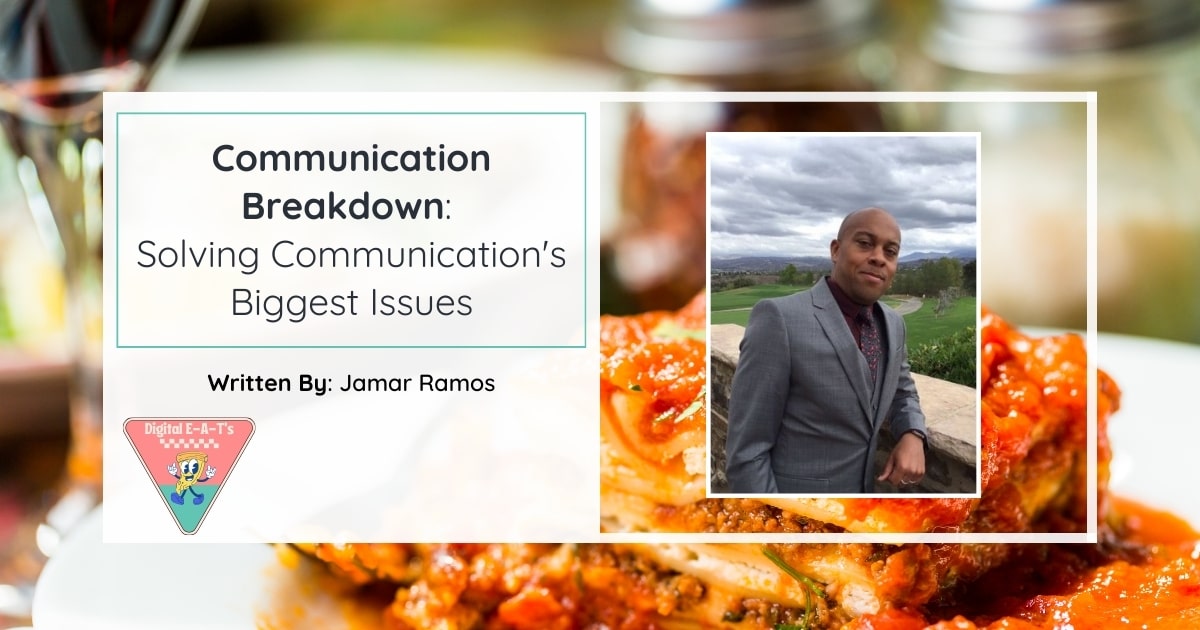Stress and Stressability Working on Emotional Regulation
- Written By - Jamar Ramos
- Content Process
- January 15, 2025
I used to throw shoes at work.
The good news is I worked in the stock room of a shoe store. The bad news is that behavior is unprofessional as hell.
I won’t list anything my co-workers did to “set me off.” The problem wasn’t anything they did because nothing they did should’ve caused that behavior. The issue was that I struggled with emotional regulation.
Emotional regulation is our ability to control our emotions during stressful moments. It means knowing that throwing boxes of shoes in any situation is unwarranted. Sometimes, we still act out, even when we know it is wrong. Emotional regulation can also help us in these situations by giving us the foundation to apply logic and reason in heightened emotional moments.
I thought getting a more professional digital marketing job would remove the aggravations causing my outbursts because I believed they were other people’s fault. However, moving from stocking shoes to marketing didn’t alleviate my emotional regulation issues; it only heightened them. Those issues impacted my work, my working relationships, and my employment.
What finally worked for me was a combination of strategies, including therapy. If you’re dealing with emotional regulation control issues, a combination of the techniques I share may work for you, too. They’ll help us navigate the changing marketing landscape and with daily frustrations.
Before we start, though, here’s a preview of what we’re discussing:
- Understanding Emotional Triggers in Digital Marketing
- The Impact of Poor Emotional Regulation
- Strategies for Developing Emotional Regulation
- Applying Emotional Regulation to Common Scenarios
- Measuring and Tracking Our Emotional Regulation Progress
- Conclusion
Emotional regulation issues start with emotional triggers. Let’s dig into some of the emotional triggers we encounter in digital marketing.
Understanding Emotional Triggers in Digital Marketing
Have you ever felt rejected? Helpless? Excluded? Unfairly criticised? These and other traumas create emotional triggers. When we experience situations that bring up these triggers, we can experience a breakdown of emotional regulation.
Work is important. It supplies the paycheck that funds our lives, the healthcare that protects our lives, and the title that (far too often) defines our lives. For many of us, work becomes everything, and it’s easy to lose equilibrium when things don’t go as we want. Emotional regulation helps when stress hits.
Emotional regulation can be complicated if we misunderstand how triggers affect us.

Situations
Digital marketers deal with numerous situations that can trigger traumas and affect emotional regulation.
Client expectations
Love is patient. Love is kind. Clients, sometimes, are not.
Sometimes, a well-written scope of work (SOW) document isn’t enough to keep the most demanding client at bay. Some clients ask that we provide them with more work than outlined in our contractual agreement.
We can feel saying “no” isn’t an option, especially if the client is paying us a substantial amount of money, so we must work harder to provide the additional out-of-scope work.
The pressure to continuously perform for clients can be an emotional trigger.
Example
When we first started Crunchy Links, we were scrambling for clients. One of our earliest ones worked on a product that would encrypt text messages for businesses and corporations. He asked for a discount on our monthly marketing retainer, and we agreed because we didn’t want to lose his business.
One month in, I seriously regretted the decision.
Three times a week, the client would call me on my personal phone for a meeting about yesterday’s metrics. He constantly questioned our long-term tactics, even though they weren’t in place enough to decide whether they worked. I sunk countless additional hours into our work with this client, and we fired him after three months. My mental health took a hit, but I learned a lesson:
Set client expectations early and maintain those boundaries. Losing a client who doesn’t respect those expectations and boundaries is okay.
Rapidly changing algorithms and platforms
Digital marketing constantly evolves and can feel like a never-ending race to keep up. By the time you finish reading this sentence, Google might have announced another algorithm update for us to study. The sheer volume of tools, platforms, services, and strategies can be overwhelming.
But some of us feel we must test, digest, and implement them.
The pressure to understand every change and every tool can be an emotional trigger.
Performance metrics and ROI demands
If you’re an in-house marketer, you must show continued growth with your strategies and tactics.
If you’re an agency marketer, your clients expect continued growth in their metrics, while your agency expects you to retain your client base and grow the revenue those clients contribute to the agency.
The pressure to show continued performance and ROI growth can be an emotional trigger.
Social media backlash and negative feedback
Sharing digital marketing knowledge on social media can result in toxicity, especially if you’re a woman or a minority.
Dealing with social media backlash and negativity can be an emotional trigger.
As these triggers build up in our professional lives, regulating our emotions and controlling how we react to the latest blow to our egos can become difficult.
The erosion of our emotional regulation impacts our work, career, and professional relationships.
Once we encounter a stressful situation, negative thoughts can take over.
Example
The words “Black Girl Magic” have a special meaning for me.
Many years ago, I worked as the social media and content manager for an e-commerce company. People could customize products like t-shirts, magnets, keychains, etc. Many people made money from the platform by creating and selling designs on products.
Someone added the phrase “Black Girl Magic” to many products, including t-shirts. The shirts on the platform were on human models, but very few of these models were Black women.
So, the platform had a bunch of white models in “Black Girl Magic”-adorned t-shirts.
There was a firestorm on social media, and it was my job to handle it. Yes, a Black man was tasked with calming down Black women who were rightfully angry about the cultural appropriation. Yes, it was my responsibility; all the while, I was pissed, too.
Outside of the CEO and CMO, I was the one who took the most bullets for the mistake. No one on social media cared about my feelings. They, again rightfully, cared about how they felt.
And, again, my mental health took a hit.
Negative thoughts
Do I need to be a better marketer? Am I a bad employee?
How can I finish this work by tomorrow? Why doesn’t the client understand that this is a long project?
Stressful situations feed our negative thoughts and our physical and emotional reactions.
Physical and emotional reactions
When we feel triggered and negative thoughts run wild, we experience physical and emotional changes.
Behavior
The physical and emotional changes we experience affect our behavior when we’re not in control.
- We cuss out our manager
- We deliver lackluster work for our client under a tightly imposed deadline
- We lash out at our social media followers and vow never to post again
None of these behaviors help our situation, and each impacts our personal and professional lives.
The Impact of Poor Emotional Regulation
Emotional regulation issues impact our decision-making, productivity and creativity, team relationships, and job satisfaction.
Impaired decision-making abilities
According to Walden University, when stressed, “[t]here is a decrease in blood flow and oxygen to the brain, which promotes lower cognitive functioning and sends the brain into a chaotic state. In this state, the brain is unable to access the information it needs to make logical decisions.”
Stress suffocates our minds, and we make bad decisions.
Impaired decision-making abilities also lead to decreased productivity and creativity.
Decreased productivity and creativity
When stress suffocates our minds, affecting our decisions, this cascades down to our productivity and creativity. According to “The Creative Brain Under Stress: Considerations for Performance in Extreme Environments,” there is a “converging body of evidence from various domains has demonstrated that creativity arises from the interaction of two large-scale systems in the brain: Whereas the default network (DN) is involved in internally-oriented generation of novel concepts, the executive control network (ECN) exerts top-down control over that generative process to select task-appropriate output.” A third system, the salience network (SN), regulates switching between the DN and the ECN during creative cognition.
Stress destroys the symbiotic relationship between these three systems. An increase in a catecholamine hormone increases SN activity, which builds a hypervigilance that mimics the human “survival mode” activated by danger. The DN also increases activity, possibly due to “increased negative self-referential processing.”
Why is all of the above an issue? During standard brain activity, the DN is active during early creative processing. When stressed, the SN takes over, and instead of using energy to think
creatively, stress makes us think about how to survive the moment. Our capacity for creative thought lessens, which impacts our productivity. We’re trying to save ourselves, not do our jobs to the fullest.
With decreased productivity and creativity comes strained client and team relationships.
Strained team relationships
According to the “State of Workplace Conflict in 2024” survey conducted by the Workplace Peace Institute
- Eighty-eight percent of respondents have witnessed poor morale among employees affected by conflict.
- Fifty-five percent have personally experienced attacks, while 48 percent have endured bullying.
- Twenty-three percent of employees chose to leave their jobs due to workplace conflict, and 18 percent witnessed project failures as a direct result.
Having strained client and team relationships can lead to burnout and job dissatisfaction.
Burnout and job dissatisfaction
Our productivity has dropped, our decision-making has been poor, our team relationships have been strained beyond repair, and we are dissatisfied with our work.
We’re now burned out because of workplace stress.
All of the above factors lead to lost revenue, lost employees, and frayed mental health. According to a report from the Berkshire Hathaway Homestate Companies:
- Depression and anxiety cost the global economy approximately $1 trillion in lost productivity
- An estimated 1 million workers are absent every day because of stress
- Job stress is estimated to cost the US industry more than $300 billion in losses due to absenteeism, diminished productivity, and accidents
- Over five work hours are lost weekly to employees thinking about their stressors
- Work-related stress costs the United States $190 billion in annual healthcare costs
Workplace stressors will always impact us, even at the best companies. Working on our emotional regulation can help prevent the build-up that leads to burnout. Many strategies can help.
Strategies to Improve Emotional Regulation
We can implement a couple of strategies to help our emotional regulation.
Cognitive reframing
Cognitive reframing, a technique used in cognitive-behavioral therapy, can help us deal with negative thoughts and patterns that affect our emotional regulation. It involves identifying and challenging negative thought patterns and replacing them with more positive and realistic ones.
Thoughts play a critical role in how we experience a situation. When you notice yourself first becoming upset, try to evaluate what you are thinking that is causing that emotion.
A report by Cornel University suggests asking the following questions:
- What is it that’s really pushing my buttons here?
- Why am I reacting so strongly?
- What’s the worst (or best) that could happen?
- How important will this be tomorrow? Next week? Next month?
Keep a feedback file
Do you have a feedback file? You should keep one.
A feedback file is what it sounds like: a file where you keep positive feedback you’ve received from friends, co-workers, managers, employees, etc., to remind you that you’re good at your job, you’re a good person, or whatever you need to help you work through the negative talk/emotions you’re feeling.
If you don’t have a feedback file, I suggest you create one. You can start with the feedback you receive from your support network.
Support network
In addition to cognitive reframing and feedback files, a solid support network can benefit our emotional intelligence.
Some examples of digital marketing support networks:
Women in Tech SEO
The wonderful Areej Abu-Ali runs Women in Tech SEO, a “global community [on] a mission to drive change in the SEO and marketing industries.
The SEO Community
Noah Learner started The SEO Community, a community “to build friendships, [help] others, [and have] fun.
The Freelance Coalition for Developing Countries
Chima Mmeje created and runs The Freelance Coalition for Developing Countries, which “provides learning resources and mentorship for BIPOC freelancers who need help upskilling and learning the business side of freelancing.”
Each of these communities works to support digital marketers in different ways. There are many more out there, too. Explore. Find your people!
Therapy
For years, friends told me to go to therapy. I ignored them because nothing was “broken” about me that needed “fixing.” I was correct in believing there was nothing “broken” about me that needed “fixing.” I was incorrect, however, to ignore those pleas to work on my mental health. My mindset kept me emotionally ignorant, with constant angry outbursts.
Once I started therapy, I learned tools to unpack where my anger originated and to understand where I wasn’t dealing with past trauma. With those tools, I was more equipped to regulate myself emotionally.
As I tell people, it isn’t about reaction but action. Our emotional responses are instant and automatic. Once we learn emotional regulation, we control how we act on those responses.
Therapy helped me with my emotional regulation, along with practicing cognitive reframing, keeping a feedback file, and finding a support network.
Improving our emotional regulation is the first step. The next step is applying what we’ve learned to common, stressful marketing scenarios.
Applying Emotional Regulation to Common Marketing Scenarios
Now that we’ve worked on our emotional regulation, it’s time to apply our lessons. Here are some ways to do so.
Handling criticism
Whether you’re in-house or agency-side, criticism comes with the territory. However, not everyone is trained to give constructive criticism, which can lead to harsh feedback from managers and clients that feels personal.
The more that personal feedback builds up, the more we can feel worthless and unskilled in our roles.
How do we stop criticism from feeling personal?
Remember what the criticism is about
Most of the criticism from our managers or clients concerns our strategies and tactics, not us. Yes, we spend hours, perhaps days, auditing, strategizing, executing, gathering data, and building presentations for our work. Receiving negative feedback on these can hurt. But, as long as our manager or client wants to improve our work, it isn’t personal.
When we receive feedback like this, it’s a great time to use some of our new emotional regulation strategies.
Create a feedback loop
Sometimes, the feedback is personal. When that happens, we should create a feedback loop that clarifies how we’d like to receive impersonal criticism.
Yes, telling a manager or client they’ve made their criticism personal can be scary. However, it’s also healthy and allows the manager or client to learn and grow.
One-way feedback creates unhealthy work environments, eroding our emotional regulation.
Navigating algorithm changes
Reading the words “Google algorithm update” can ruin a marketer’s day. Even doing everything correctly isn’t complete protection from a ranking shift.
There are a few actions we can take before, during, and after a Google update:
Stay calm
Search engines constantly update their algorithms. We can’t panic every time we get word of an update. We’ll all have heart attacks and die.
Educate ourselves

Follow Google’s Search Liasion on Bluesky. Read what your favorite digital marketers say about their observations. Test your own observations.
Learn about the potential effects of Google’s updates so you can educate your clients.
Educate clients
As digital marketers, we study Google’s updates. Many of our clients don’t, but they pay us to keep them informed and educate them.
As you learn about the latest update, inform your clients how it may affect them and their business. Assure them you’re monitoring important KPIs and will report back.
Responding to social media crises professionally
Social media managers have a challenging job: They field requests, questions, suggestions, and issues from followers. It can be difficult to maintain emotional regulation when you have anonymous people hurling names or abuse at you.
Remember: they aren’t mad at you. They’re angry at the company.
I ran social media for a large e-commerce company. Every post I made would have at least one person telling me some version of the following:
“Get off Twitter and get me my products.”
I wasn’t in charge of shipping products. I’m sure our followers knew that, but in their anger, they didn’t care. They just wanted their orders.
It isn’t easy to continually take online abuse, even when we know it’s not aimed at us.
Managing team conflicts effectively
Team conflicts are inevitable. Solving those conflicts effectively requires sound emotional regulation and sound communication skills.
Address conflict promptly:
As soon as there is an issue, address it. Letting issues fester leads to more problems.
Be open and honest:
Allow for open, honest communication to ensure everyone feels comfortable sharing. Conflicts can only be solved when everyone has a say in the situation.
Be respectful:
Just as we would like any feedback given to us to be respectful, be respectful when listening to team issues. If someone feels their problems aren’t being heard, they’ll remain quiet, and issues will fester.
Listen carefully:
In my article “Working Toward Alignment,” I discuss the multiple benefits of active listening in conversation, including increased trust.
“When your [conversation partner] sees…that you’re listening and genuinely participating, they’ll trust you more.”
Follow through:
Act on your plan and stick with the discussions until you’ve worked through each conflict.
You should also follow through with yourself to measure the impact and progress once you’ve put the above into practice. How do you do that?
Measuring and Tracking Emotional Regulation Progress
Here are some ways to monitor and measure your progress in emotional regulation.
Daily mood tracking
- Record your mood at the same time
- Use a simple scale, like 1-10, to rate your overall mood and specific emotions
- Consider using apps tracking apps like:
- Daylio
- Moodkit
- Moodnotes
Identify triggers and responses
- Keep a dedicated “trigger” section in your mood tracker
- Write down the situation, your emotional reaction, and your response
- Look for patterns over time to identify common triggers
- Reflect on your responses – were they proportionate and helpful?
Physical symptoms checklist
- Create a list of common physical symptoms you experience during emotional distress
- Include muscle tension, headaches, stomach issues, fatigue, etc.
Coping strategies log
- Maintain a list of strategies you’ve learned (e.g., deep breathing, progressive muscle relaxation, cognitive reframing)
- Each time you use a strategy, note:
- The situation
- Which strategy you use
- How effective it was (1-10 scale)
- Review periodically to see which strategies work best for different situations
Mindfulness practice record
- Use an app like Headspace or Calm to track your meditation sessions
- If not using an app, log your practice manually:
- Date and duration of practice
- Type of mindfulness exercise
- Brief notes on your experience or any insights gained
- Set reminders to practice regularly
Behavioral changes
- Use a sleep-tracking app or keep a sleep diary to monitor changes
- Note changes in appetite or eating habits
- Track social interactions: frequency, quality, and your comfort level
- Look for correlations between these behaviors and your emotional state
Objective feedback
- Choose 2-3 trusted individuals who see you regularly
- Ask them to note any changes in your emotional responses or behavior
- Set up regular check-ins (e.g., monthly) to discuss their observations
- Be open to feedback and avoid becoming defensive
Professional assessment
- If working with a mental health professional, schedule regular check-ins
- Discuss your self-monitoring efforts and ask for their professional insights
- They may use standardized assessments to track your progress objectively
Goal-setting and review
- Set SMART goals (Specific, Measurable, Achievable, Relevant, Time-bound)
- Example: “I will use deep breathing to calm down in stressful situations at least three times this week”
- Review your goals weekly or biweekly
- Celebrate progress and adjust goals as needed
Integration and analysis
- Regularly review all your tracking methods together (e.g., monthly)
- Look for patterns and correlations across different metrics
- Use this integrated view to gain deeper insights into your emotional regulation progress
Conclusion
Emotional regulation isn’t just about keeping our cool when Google drops another algorithm update, or a client sends us their fifteenth “urgent” email of the day. It’s about building a sustainable foundation of positive emotional responses to deal with an industry that constantly tests our patience and resilience. I still have moments where I want to throw things (metaphorically now, thankfully).
The difference is that I’ve learned to recognize my triggers, understand my emotional responses, and choose how I act. Sometimes, that means stepping away from my computer for a few minutes. Other times, it means pulling up my feedback file to remind myself that I’m good at what I do, regardless of what that one angry tweet might suggest. The strategies I’ve shared aren’t just theoretical concepts—they’re lifelines I’ve used to transform from someone who literally threw shoes at work to someone who can handle high-pressure situations with relative grace (if cussing at a computer screen counts as grace). Whether you’re dealing with algorithm anxiety, client complications, or team tensions, remember that emotional regulation is a skill you can develop and strengthen over time.
If you’re worried about where to start, start small. Begin with a simple mood tracker, or create your feedback file. Join one of the supportive communities mentioned earlier. Consider therapy if it could help.
Whatever you choose, every step toward better emotional regulation invests in your professional growth and personal well-being. Because at the end of the day, being a successful digital marketer isn’t just about mastering the latest SEO techniques or social media strategies—it’s about working on mastering ourselves. The best SEO strategy begins with a mentally healthy strategist.
Written By

Jamar Ramos
Jamar Ramos is a multichannel digital marketer currently doing part time consulting for start ups. In this role I help new companies build a solid digital marketing foundation, then layer on multi-channel initiatives to add several touchpoints to their customer experience. I’ve been working in the field for eleven years.
Articles

5 Unpopular B2B SaaS Content Strategies That Drive More Product Signups
5 Unpopular B2B SaaS Content Strategies That Drive More Product Signups. Learn more from Deborah Damilola!

Hey SEO’s — Everybody Love Everybody
SEO’s and digital marketers need to build each other up instead of breaking eachother down! The purpose of Digital E-A-T’s!

Working Toward Alignment
Successful communication occurs when there’s an authentic connection between the speaker and the audience. This phenomenon, known as neural entrainment, is challenging to achieve.

Communication Breakdown: Solving Communication’s Biggest Issues
Miscommunication impacts trust, efficiency, and revenue. Why are we so bad at it if communication is essential and poor communication so costly? Learn more from Jamar Ramos!

Millennium Man: What Chris Jericho’s WWE Debut Teaches Us About Marketing
Let’s look at how WWE’s marketing machine went into overdrive for Chris Jericho.

